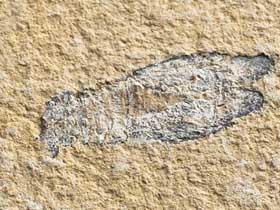The best example of how evolutionists interpret fossils according to their own preconceptions is a fossilized elbow bone found in the Kenyan region of Kanapoi. This fossil, displayed in the Kenya National Museum – East Rudolf under the number KP 271, consists of a part of the upper arm bone near the elbow. Unearthed in 1965 by Bryon Patterson of Harvard University, it has been exceedingly well preserved. The latest tests carried out by evolutionists have shown it to be around 4.5 million years old.1 The fossil is therefore known as the oldest hominid fossil discovered to date.
In 1967, the researchers Bryan Patterson and W.W. Howells joined forces to describe KP 271. They suggested that the fossil's anatomy was similar to that of human beings and that it belonged to Australopithecus. Howells and his assistant Patterson announced the report regarding their research in the 7 April, 1967 edition of Science magazine, in which they stated:
In these diagnostic measurements, Kanapoi Hominoid 1 [the original name given to the fossil] is strikingly close to the means of the human sample.2
Though admitting the close resemblance to the bone of a present-day human, Howells and Patterson still maintained that the fossil belonged to Australopithecus, because to them, it was unacceptable that such an old fossil could belong to Homo sapiens.
But subsequently, studies performed by other researchers using computers again revealed that the fossil KP271 was identical to a human bone. As the result of his computer-assisted research, Henry M. McHenry of the University of California published an article in 1975:
After this, various other researchers (including David Pilbeam and Brigitte Senut) have also performed experiments and comparative studies proving that the bone is identical to H. sapiens. Yet despite all the evidence, even the evolutionists who carried out all this research were unable to admit, on account of their own preconceptions, that this fossil could belong to H. sapiens.
1. Bryan Patterson, Anna K. Behrensmeyer, William D. Sill, "Geology and Fauna of a New Pliocene Locality in Northwestern Kenya," Nature, Vol. 226, June 6, 1970, pp. 918-921.
2. Bryan Patterson, W. W. Howells, "Hominid Humeral Fragment from Early Pleistocene of Northwestern Kenya," Science, Vol. 156, April 7, 1967, p. 65.
3. Henry M. McHenry, "Fossils and the Mosaic Nature of Human Evolution," Science, Vol. 190, October 31, 1975, p. 428.


